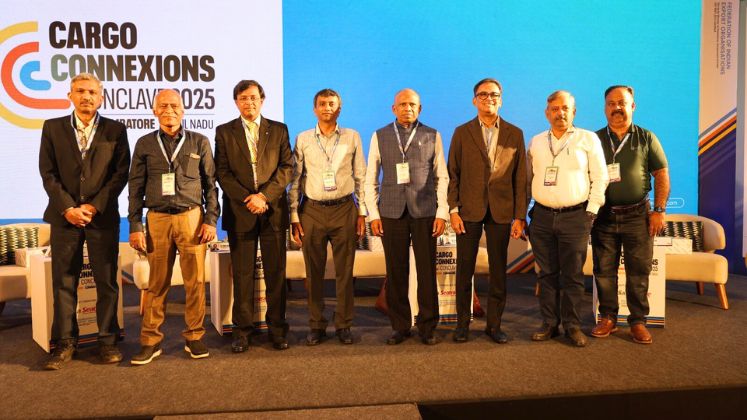
Key players from the export and logistics industries came together in Coimbatore for the Cargo Connexions Conclave 2025. Attending the summit, N. Thirukkumaran, General Secretary, Tiruppur Exporters Association (TEA), emphasised Tirupur’s important position as one of India’s ESG-compliant manufacturing hubs and a major MSME cluster.
He underlined that Tirupur, which is well-known for its textile sector, has been a leader in sustainable industrial practices and is home to 90 per cent MSMEs. He added that Tirupur has a 96 per cent reuse rate and was the first city in India to have a Zero Liquid Discharge (ZLD) system, reusing 13 crore litres of water daily. The area has also achieved impressive progress in renewable energy, producing 250 megawatts of solar energy and 2,000 megawatts of windmill electricity. Around 350 megawatts of this are utilised for industrial uses, while the Tamil Nadu Electricity Board receives the remaining amount.
According to him, Tirupur has planted 2.2 million trees with a 90 per cent survival rate as part of its massive afforestation operations. Nearly 7,000 metric tonnes of CO2 emissions have been reduced as a result of this initiative.
Furthermore, a number of lake revitalisation initiatives have been successfully carried out through the Tirupur Exporters’ Association (TEA).
He said that Tirupur’s logistics industry, where exporters operate with turnovers ranging from US $ 58,000 (Rs. 50 lakh) to US $ 115,000 (Rs. 1 crore), has enormous potential. However, a number of logistical issues were brought up, such as the instability caused by liner costs that vary every 15 days.
Furthermore, exporters are forced to rely on Colombo due to the lack of a direct vessel from India, which affects productivity and competitiveness in the worldwide market. Prior to 1st February 2025, a direct vessel ran to Europe; however, this service was halted.
In order to address and create a consistent pricing structure that would help exporters and simplify operations, he suggested bringing together all pertinent associations and drawing attention to the excessive freight forwarding fees levied by freight forwarders that are not standardised.






